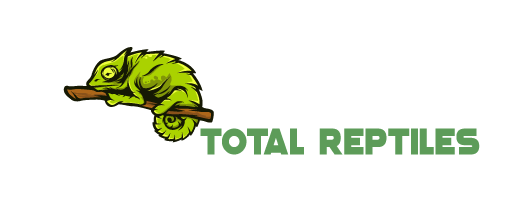Bearded dragons can eat some microgreens but should be fed in moderation. This vegetable has become a popular nutritional powerhouse in recent years. These tiny vegetable greens pack a big nutritional punch despite their small size. From vitamins and minerals to antioxidants are little superfoods bursting with nutrients.
Are you a proud owner of a bearded dragon, constantly on the lookout for new and exciting additions to their diet? If so, you’ve probably heard about the nutritional benefits for humans. But the burning question remains: Can bearded dragons eat microgreens, too?
Let’s look closer at their potential health benefits and whether bearded dragons can and should eat them.
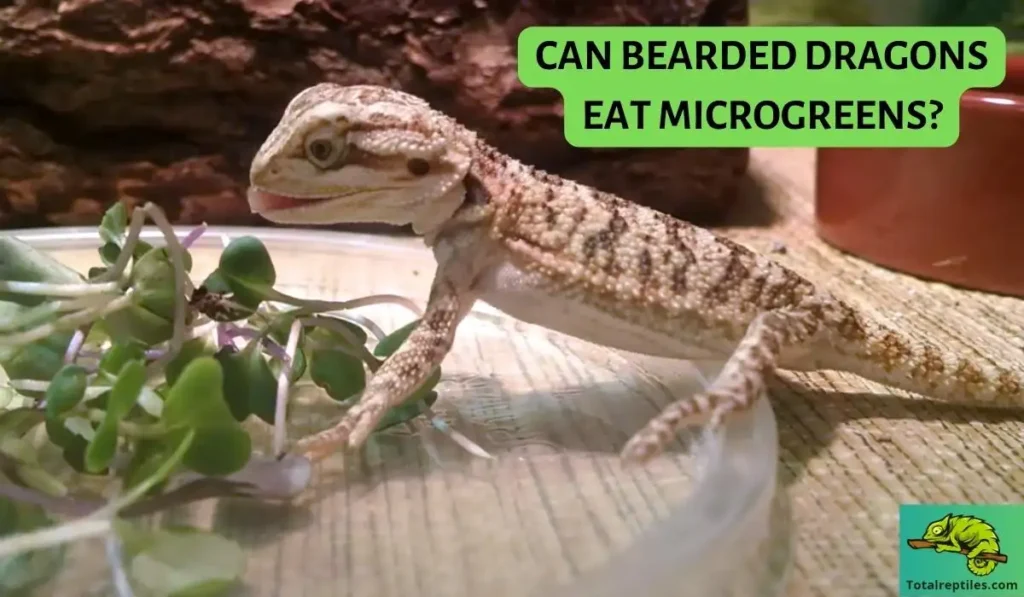
What are Microgreens?
Microgreens are the small, young seedlings of vegetables and herbs harvested just after the first true leaves have developed, typically 1-3 weeks after germination.
They are grown in high-density indoor environments and are more nutrient-dense than their mature plant counterparts. Their tender textures and vibrant flavors make them a rising culinary star.
Nutritional Benefits of Microgreens
So why are microgreens considered nutritional powerhouses? Here are some of their biggest benefits:
- Higher vitamin and mineral levels -These vegetables contain much higher vitamins and minerals than mature greens. For example, red cabbage greens have 6 times more vitamin C than mature red cabbage.
- Powerful antioxidants – Antioxidants fight free radicals that damage cells. These greens provide a mega dose of helpful antioxidants like anthocyanins and carotenoids.
- Vital nutrients – Young greens offer an excellent potassium, magnesium, iron, zinc, and copper source. They also have varying amounts of protein, fiber, and essential fatty acids.
- Bioavailability – Since microgreens are eaten fresh and raw, their nutrients are more bioavailable than cooked or processed foods. More of their nutrients can be readily absorbed and utilized.
Are Microgreens Safe for Bearded Dragons?
Many microgreens make excellent additions to a bearded dragon’s diet. But not all are considered dragon-safe. Certain varieties should be avoided or only fed in moderation.
Here are some dos and don’ts for feeding to bearded dragons:
DO feed microgreens:
- Arugula
- Basil
- Carrot tops
- Chard
- Cilantro
- Dill
- Kale
- Mint
- Parsley
- Radish tops
- Turnip tops
- Mustard greens
- Alfalfa
AVOID feeding microgreens:
- Broccoli (goitrogens)
- Cress (goitrogens)
- Kohlrabi (goitrogens)
- Sorrel (oxalates)
- Spinach (oxalates)
- Sprouts (indigestible seed coats)
- Beet greens (oxalates)
Feed in moderation:
- Bok choy (goitrogens)
- Brussels sprouts (goitrogens)
- Cabbage (goitrogens)
- Collard greens (goitrogens)
- Watercress (goitrogens)
Too many goitrogenic foods can negatively impact thyroid function. Oxalates can bind calcium absorption. Both should be limited in a bearded dragon’s diet. But the listed DO feed options provide a safe, nutritious choice.
Are There Any Concerns When Feeding Microgreens?
Most of these tiny greens provide excellent supplemental feeding for bearded dragons. There are just a few nutritional and contamination concerns to keep in mind:
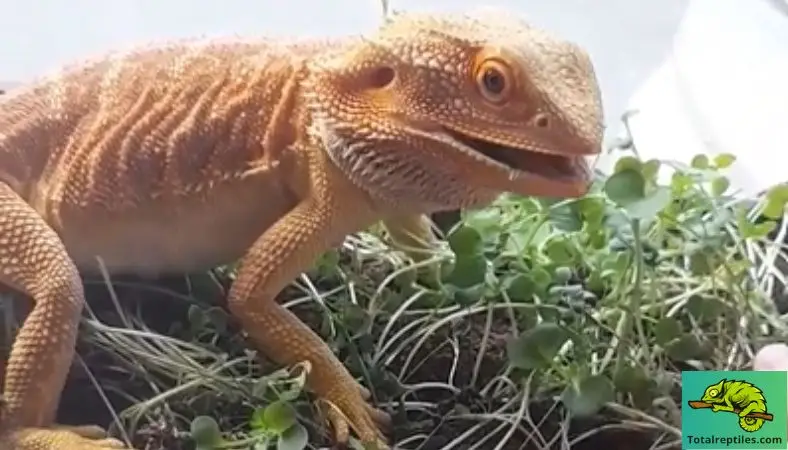
- Nutritional balance – Microgreens are very low in calcium. A proper calcium supplement should still be provided to balance their phosphorus levels.
- Overfeeding – These small vegetables are highly concentrated sources of nutrients. Too much can cause digestive upset. They should be fed in moderation as a supplement, not a staple.
- Pesticides – Organic is ideal for purchasing to avoid pesticide exposure. Thoroughly rinse all before feeding.
- Pathogens – Microgreens have been linked to some foodborne illness outbreaks. Only purchase/grow greens from trusted sources. Avoid any that are slimy or smell bad.
With proper precautions, microgreens can give dragons a nutritious nutritional boost a few times a week for variety.
How Should Prepare and Serve Microgreens for Bearded Dragon?
Here are some tips for selecting, prepping, and serving microgreens:
- Choose organic or homegrown when possible. Give them a good rinse and pat dry.
- Chop into bite-sized pieces your dragon can manage. Shred into smaller pieces for younger dragons.
- Mix just a spoonful or two of chopped microgreens into your dragon’s fresh salads a few times per week.
- For mature dragons, microgreens can also be offered in a shallow dish for free grazing as an occasional treat.
- To balance phosphorus, sprinkle greens with calcium powder before serving.
- Avoid offering every single day, as diet variety is important. Rotate different nutritious varieties.
- Introduce new types slowly and watch for any signs of upset digestion.
- If cultivated at home, avoid using pesticides or chemicals.
Are There Any Signs Bearded Dragon Should Avoid Microgreens?
Most bearded dragons tolerate microgreens well and benefit from their nutrient boost. But each dragon is an individual. Watch for these signs that may not agree with your pet:
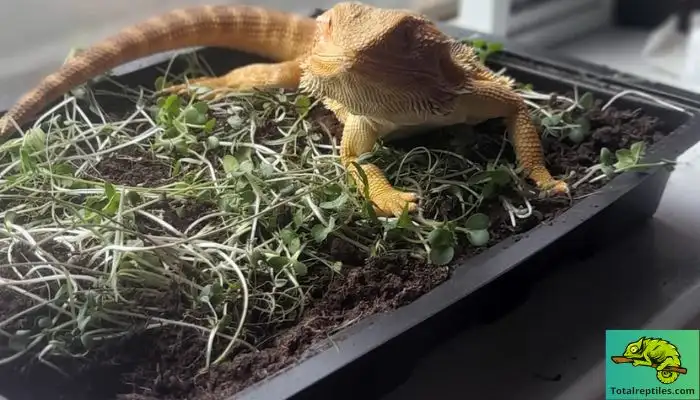
- Decreased appetite or interest after eating microgreens
- Changes in energy level, lethargy, or weakness
- Difficulty digesting, vomiting, or loose stools
- Signs of gastrointestinal distress like black beard or belly inflation
If you notice any of these symptoms, stop feeding for a week or two and monitor your dragon. Consult an exotic vet if problems persist. Some dragons may have sensitivities.
What Other Nutritious Foods Can I Feed My Bearded Dragon?
For variety, you can mix up your dragon’s salads by rotating different healthy ingredients like:
Leafy Greens: Endive, escarole, mustard greens, turnip greens, alfalfa, dandelion, collard greens, bok choy.
Other Vegetables: Zucchini, squash, bell peppers, carrot, sweet potato, snap peas, green beans, broccoli.
Fruits: Strawberries, blueberries, raspberries, melon, mango, figs.
Edible flowers: Roses, hibiscus, pansies, nasturtiums, violets.
Shoot for various colors and textures to keep their meals interesting and provide a spectrum of nutrients. Aim for 80% vegetables and 20% fruits and treats.
Can Microgreens Become a Regular Part of Bearded Dragon’s Diet?
Microgreens can certainly become a nutritious regular supplemental feeding for bearded dragons. Follow these tips:
- Feed in moderation just 2-3 times per week, not daily.
- Stick to dragon-safe varieties and avoid goitrogenic greens.
- Chop small, bite-sized pieces appropriate for your dragon’s age.
- Mix into salads with other veggies for nutritional balance.
- Watch for any signs of individual sensitivity or gastrointestinal upset.
- Provide ample calcium supplements when serving.
- Purchase from trusted organic sources or grow your own.
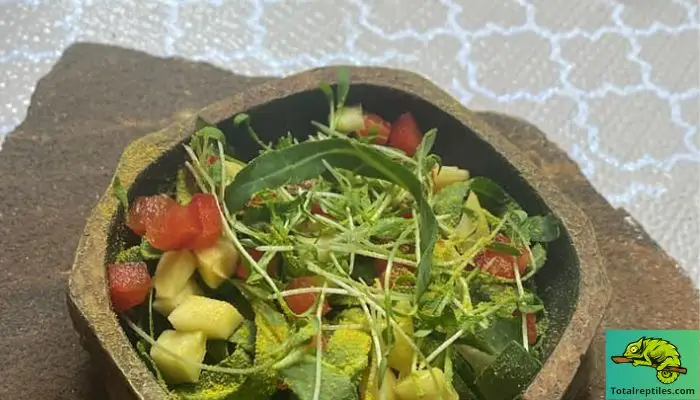
With a little care in preparation and feeding, microgreens can be an excellent addition to a balanced bearded dragon diet. Their big nutritional punch in a tiny package can give your dragon a vital health boost!
Microgreen Growing Tips
Growing microgreens at home is an easy way to control the quality of your crops. Here are some quick tips for DIY microgreen cultivation:
- Use a shallow container like a baking sheet or seedling tray. Cover drainage holes with mesh.
- Fill with a seed starting mix, compost, or coconut coir substrate. Press down lightly.
- Sprinkle seeds evenly across the tray. Cover lightly with more substrate if needed.
- Mist with water and cover the tray with a plastic dome or towel to retain humidity.
- Place in a sunny spot and mist 1-2 times daily to keep moist but not soaked.
- Most greens will be ready to trim in 7-21 days once the first true leaves appear.
- Use clean scissors to snip greens off at the base. Rinse and pat dry.
- Store freshly cut greens in a bowl covered with a towel in the fridge for up to 5 days.
FAQ
1. Can bearded dragons eat pea microgreens?
Yes, bearded dragons can eat pea greens as they are rich in vitamins A and K, making them a healthy snack for your pet. As with other microgreens, they should be fed moderately. A portion size of about 1-2 teaspoons of per day is recommended for adult bearded dragons, while half a teaspoon is sufficient for juveniles.
2. Can bearded dragons eat sunflower microgreens?
Sunflower microgreens are safe for bearded dragons and provide nutrients like vitamin E, magnesium, and selenium. I offer them 1-2 times a month, finely chopped in salads. Sunflower greens are higher in phosphorus, so I always mix extra calcium powder when feeding. In moderation, sunflower microgreens give my bearded dragon a healthy vitamin boost.
3. Can bearded dragons have radish microgreens?
Yes, bearded dragons can eat radish microgreens, but only in moderation. Radish microgreens are a good source of vitamins and minerals for your pet’s health.
Conclusion
Microgreens are nutritional superstars packed with vitamins, minerals, antioxidants, and more. Many varieties are safe and beneficial for bearded dragons to help supplement their diet. Focus on pesticide-free, calcium and antioxidant-rich varieties like kale, sunflower, arugula, and carrot, offered in moderation 2-3 times per week.
Growing your own chemical-free greens at home is the best way to control quality. With some common sense precautions, microgreens can provide a fun new way to give your beardie an extra nutritional boost!
